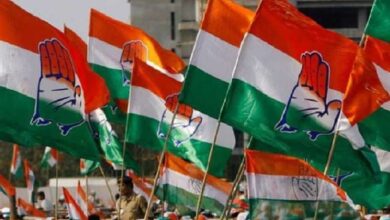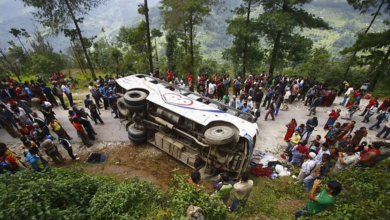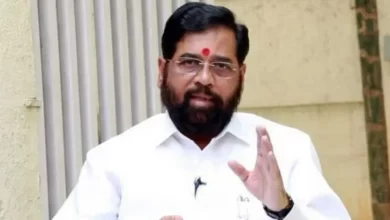population and development

Vijay Prakash Srivastava
India is the second largest populated country in the world after China. According to a section of economists and sociologists, our huge population is at the root of all the problems of the country like unemployment, poverty etc. Even among our rulers, irrespective of the party they belonged to, there has been a tendency to shun the population by treating them as a hindrance to development. The first census in the country was conducted in 1872. Now this census is conducted every ten years. There are also some other surveys related to different aspects of the population. One of these is the National Family Health Survey, which was conducted for the first time in 1992-93. The report of the fifth such survey conducted during 2019-21 has been released recently. Many new things have come to the fore in this survey.
According to the findings of the survey, the trend of continuous increase in the population of the country till a decade ago has stopped. For the first time in the history of the country, the fertility rate has fallen below the estimated replacement rate of 2.1. According to the World Health Organization (WHO), this is the level when the population, instead of increasing, simply compensates for its decrease. The average child birth rate per woman has come down to 2.0 from 2.2 in 2015-16. Even if this decline is only 0.2, but for the country as a whole, it indicates a bigger decline than an increase in population. If the birth rate remains the same, then the population of the country will be seen decreasing.
India’s population policy has generally been liberal, barring ‘forced’ attempts at family planning during the Emergency. There was never any thought of imposing strictness like China in this matter. Whatever government measures of population control are applicable to the public, they are often suggestive and not binding. Barring a few exceptions, such as in certain states, people having more than two children have been declared ineligible to contest panchayat elections.
Resources in the world are limited. In such a situation, when resources are less and people are more, the availability of resources per person will be less. If there are fewer people, the availability of resources per capita will be more. Examples of developed countries like Germany, Japan, Australia, New Zealand etc. are given to confirm this statement. But it cannot be taken as absolute truth. Somewhere along with making the most of the resources developed countries also make higher investments in making their population more capable and capable. If we have been considering the population of our country as the biggest obstacle in the progress of the country, then the time has come to change this attitude.
According to economists, the population growth rate is high in the initial stages of development. With the increase in the level of income, literacy also increases and the birth rate starts decreasing. The results that have come in the National Family Health Survey can be seen in conjunction with this. If population continues to be a problem, it is because the potential inherent in it is not taken advantage of.
In the case of India, this is completely true. There are crores of youth in the country who have nothing to do. Had they been engaged in meaningful productive work, not only would they be in a better position, but the country would also be in a better position, whether viewed in terms of growth in GDP or from a social perspective.
It is said that there is a direct relationship between poverty and population growth. In other words, poor people produce more children. There may be some truth in this, but the neonatal mortality rate is also found more in the poor section. Therefore, children should survive, in this hope the rate of child birth is high for them. At the same time, the attitude of poor families is that as soon as every child grows up a little, he will start earning by doing work and this will increase the income of the family.
If the income level of the poor is raised so that they can live a dignified way, then the birth rate in this class can decrease.
The cycle of development is directly related to the nature and size of the population. When educated-trained-skilled population is fully employed in productive work, the income level of them and their family rises, with increase in income consumption increases with increase in demand. In this way new employment opportunities are created and this cycle continues like this.
Socio-economic inequalities cannot be completely eradicated, but attention must be paid to their reduction. One such case is about opportunities for women. For example, the service industry in India is expanding rapidly. Most of the new employment opportunities are being created in this sector. Proportionately, the participation of women in the service sector is also increasing, be it in the field of information technology or the call center industry. But we also have a strong manufacturing sector in our country and very few women are employed in it.
Whether it is a factory for manufacturing vehicles or manufacturing consumer goods like washing machines and fridges etc., you will see only a few women working. In countries like Russia etc., women have been doing work like driving trucks for many decades, but in our country we have kept them away from physical capacity work. The doors of the National Defense Academy have been opened for the girls after a recent Supreme Court ruling. Considering this as a new beginning, employment of women in the manufacturing industry should also be encouraged.
If women constitute half of the population, their representation in employment should be in the same proportion. But it has many obstacles. On the one hand, there are inequalities in the opportunities of education, on the other hand, our social system has also been responsible for this, in which it was assumed that the limit of women was up to the stove. But now this thinking is being left behind.
There is a need to bring more women into the labor force and employment. It is not only necessary for gender equality and inclusive society, it is also indispensable for strengthening the base of the economy. It is a matter of thinking that what would have been possible for the western countries to come in the category of developed countries without the widespread participation of women?
Now the proportion of women in the population is increasing and awareness is increasing among them about their interests and health etc. This should be seen as an opportunity for our country. A comprehensive strategy should be devised to take full advantage of this change. In this, the most emphasis should be on increasing opportunities for education and higher education, creating new employment opportunities, ensuring adequate availability of basic services, bringing more people under the ambit of skill development and increasing the participation of women in the economy. If India has to come from developing to developed countries, then the opportunity is in front of us.
The post Population and Development appeared first on Jansatta.
,






